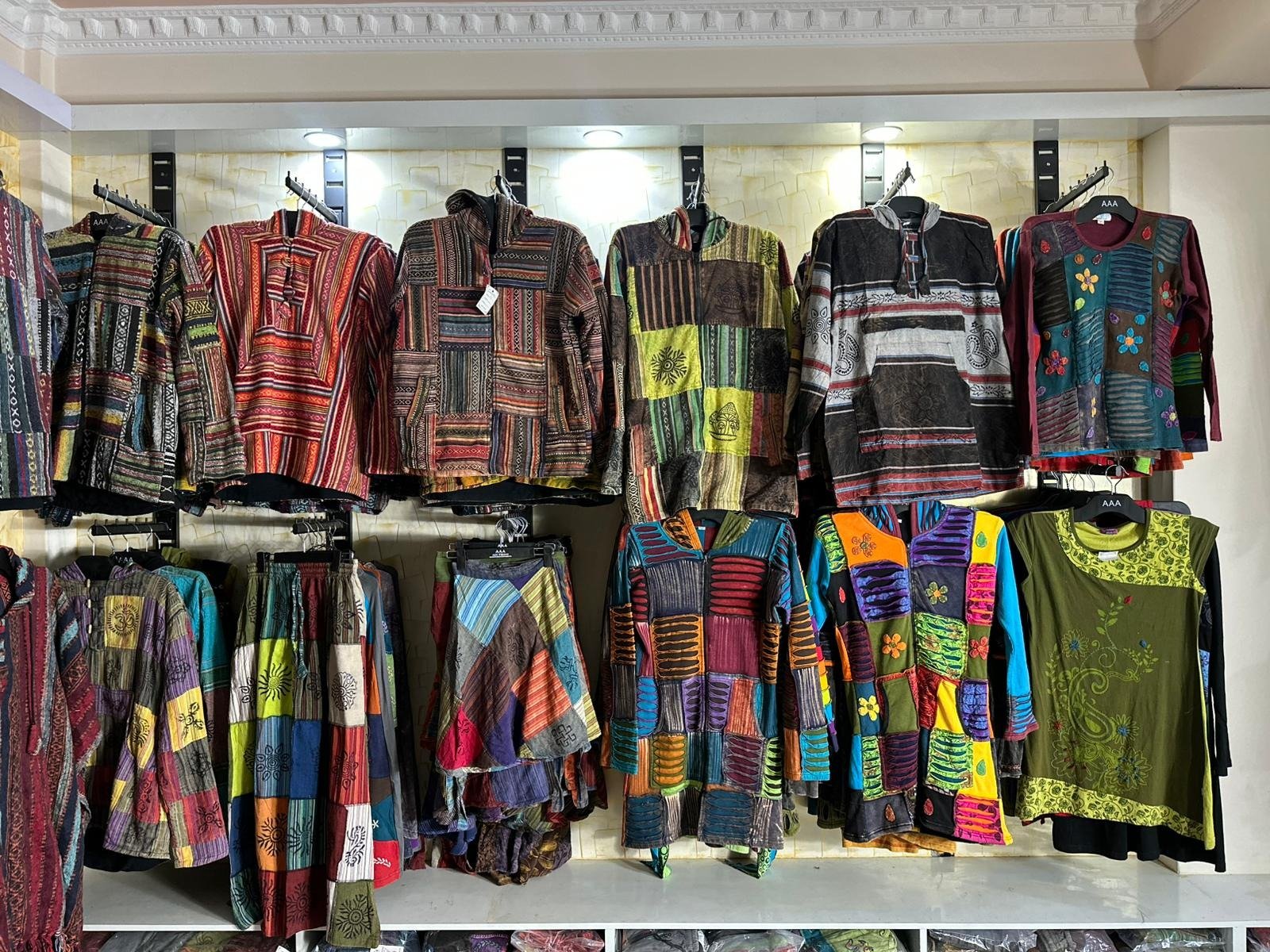In the world of premium outerwear, few garments command the respect and admiration of the Himalayan wool jacket. Born from the harsh mountain climates of the world’s highest peaks, these exceptional pieces represent a perfect fusion of ancient craftsmanship and modern functionality. As outdoor enthusiasts and fashion-conscious consumers increasingly seek authentic, sustainable alternatives to synthetic materials, Himalayan wool jackets have emerged as the gold standard for those who refuse to compromise on quality, warmth, or style.
Table of Contents
The Origins of Himalayan Wool Excellence
The story of Himalayan wool begins in the remote valleys and high-altitude plateaus where indigenous communities have perfected the art of wool production over millennia. The extreme climate conditions of the Himalayan region, with temperatures plummeting well below freezing and fierce winds that can knock a person off their feet, have necessitated the development of superior insulation materials. Local artisans discovered that wool from high-altitude sheep, yaks, and other mountain animals possessed unique properties that made it ideal for creating garments capable of withstanding the most challenging conditions.
Traditional Himalayan communities developed sophisticated techniques for processing this wool, creating textiles with exceptional thermal regulation properties. These methods, passed down through generations, emphasize natural processing techniques that preserve the wool’s inherent characteristics while enhancing its durability and performance. The result is a material that not only provides outstanding insulation but also maintains breathability, moisture-wicking properties, and remarkable longevity.
Superior Material Properties and Performance
Himalayan wool jackets stand apart from conventional outerwear due to the exceptional properties of their primary material. The wool fibers possess a natural crimp structure that creates millions of tiny air pockets, forming an incredibly effective insulation system. This unique architecture allows the material to trap warm air close to the body while simultaneously allowing moisture vapor to escape, preventing the clammy feeling often associated with synthetic insulation.
The lanolin naturally present in Himalayan wool provides water-resistant properties, offering protection against light precipitation and wind-driven moisture. This natural water repellency, combined with the wool’s ability to retain warmth even when damp, makes these jackets particularly valuable for unpredictable mountain weather conditions. Unlike synthetic alternatives that can lose their insulating properties when wet, Himalayan wool maintains its thermal efficiency, potentially making the difference between comfort and hypothermia in extreme conditions.
Temperature regulation represents another significant advantage of Himalayan wool jackets. The material’s natural thermostatic properties automatically adjust to environmental conditions and activity levels. During periods of high exertion, the wool’s breathable structure allows excess heat and moisture to escape, preventing overheating. Conversely, when temperatures drop or activity levels decrease, the wool’s insulating properties intensify, maintaining core body temperature without the need for additional layers.
Craftsmanship and Construction Excellence
The construction of authentic Himalayan wool jackets reflects centuries of refined craftsmanship techniques. Master artisans employ time-honored methods that prioritize both functionality and durability. Hand-spinning processes create stronger, more consistent yarn compared to machine-produced alternatives, while traditional weaving techniques result in tighter, more weather-resistant fabrics.
Quality Himalayan wool jackets feature reinforced stress points, including shoulders, elbows, and pocket areas, where wear typically occurs first. Premium manufacturers incorporate additional design elements such as adjustable cuffs, storm flaps, and strategically placed ventilation panels that enhance the garment’s versatility across various weather conditions and activity levels.
The attention to detail extends to hardware selection, with many manufacturers choosing corrosion-resistant zippers, buttons, and fasteners specifically designed to withstand extreme temperature fluctuations. These components undergo rigorous testing to ensure reliable performance in conditions where equipment failure could have serious consequences.
Versatility Across Applications
Modern Himalayan wool jackets excel in diverse applications, from technical mountaineering expeditions to urban professional environments. Their natural aesthetic appeal makes them equally suitable for outdoor adventures and sophisticated city wear. The timeless design elements typically associated with these garments ensure they remain stylistically relevant regardless of changing fashion trends.
For outdoor enthusiasts, Himalayan wool jackets serve as essential mid-layer pieces in technical layering systems. Their breathability and moisture management properties make them ideal for high-intensity activities like hiking, skiing, or climbing. The natural odor resistance of wool means these jackets can be worn for extended periods without developing unpleasant smells, a significant advantage during multi-day outdoor excursions.
Urban professionals appreciate Himalayan wool jackets for their sophisticated appearance and practical benefits. The natural drape and texture of quality wool create an refined silhouette suitable for business casual environments, while the superior insulation properties provide comfort during cold commutes or outdoor activities.
Sustainability and Environmental Considerations
In an era of increasing environmental consciousness, Himalayan wool jackets represent a sustainable alternative to petroleum-based synthetic materials. Wool is a renewable resource that requires minimal processing chemicals compared to synthetic alternatives. The biodegradable nature of wool means these garments will eventually return to the earth without leaving harmful residues.
Many Himalayan wool producers maintain traditional grazing practices that promote sustainable land management and support local ecosystems. These practices often result in improved soil health, carbon sequestration, and biodiversity preservation. By choosing authentic Himalayan wool jackets, consumers support sustainable production methods and traditional communities that have maintained these practices for generations.
The exceptional durability of properly cared for Himalayan wool jackets contributes to their environmental benefits. Rather than requiring replacement every few years like many synthetic alternatives, quality wool garments can last decades with proper maintenance, significantly reducing their overall environmental impact.
Care and Maintenance Guidelines
Proper care ensures Himalayan wool jackets maintain their performance characteristics and appearance for many years. Unlike delicate merino wool garments, Himalayan wool typically requires less frequent washing due to its natural odor resistance and dirt-repelling properties. When cleaning becomes necessary, gentle hand washing or professional cleaning services designed for wool garments provide the best results.
Storage considerations include protecting the garment from moth damage through proper cleaning before long-term storage and using cedar blocks or lavender sachets as natural deterrents. Proper hanging or folding techniques prevent permanent creasing and maintain the garment’s shape over time.
Investment Value and Long-term Considerations
Quality Himalayan wool jackets represent a significant initial investment, but their exceptional durability and timeless appeal often make them more economical over time compared to frequently replaced synthetic alternatives. The superior performance characteristics, combined with the garment’s versatility across various applications and seasons, provide excellent value for consumers who prioritize quality and longevity.
Many enthusiasts develop strong emotional connections to their Himalayan wool jackets, viewing them as trusted companions for outdoor adventures and daily wear. These garments often improve with age, developing a unique patina and character that reflects their owner’s experiences and adventures.
Conclusion and Key Takeaways
Himalayan wool jackets represent the pinnacle of natural fiber outerwear, combining centuries of traditional craftsmanship with proven performance in the world’s most challenging environments. Their superior insulation properties, natural moisture management, and exceptional durability make them invaluable additions to any wardrobe.
Key takeaways for prospective buyers:
- Unmatched Performance: Himalayan wool provides superior insulation, breathability, and moisture management compared to synthetic alternatives
- Versatile Investment: These jackets excel in both outdoor adventures and urban professional settings
- Sustainable Choice: Natural, renewable materials support environmental conservation and traditional communities
- Long-term Value: Higher initial cost offset by exceptional durability and timeless style
- Heritage Craftsmanship: Traditional construction techniques ensure superior quality and attention to detail
- Natural Benefits: Inherent odor resistance, water repellency, and temperature regulation properties
- Care Considerations: Minimal maintenance requirements with proper handling and storage
For those seeking outerwear that delivers exceptional performance while supporting sustainable practices and traditional craftsmanship, Himalayan wool jackets represent an investment in quality, functionality, and heritage that will serve faithfully for decades to come.




